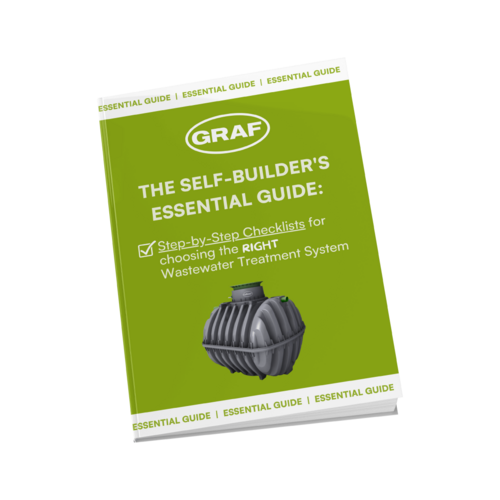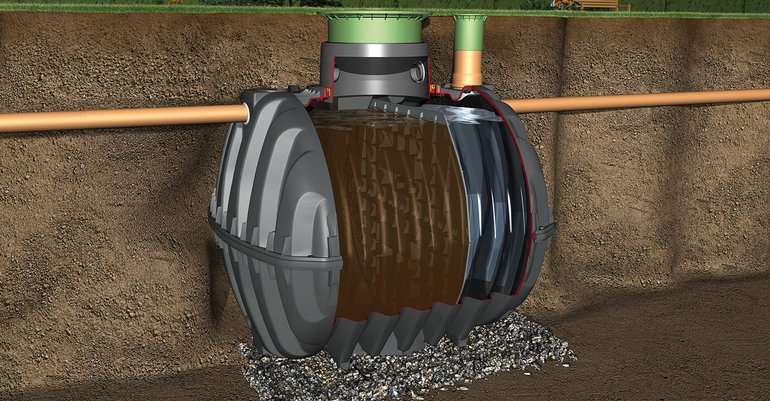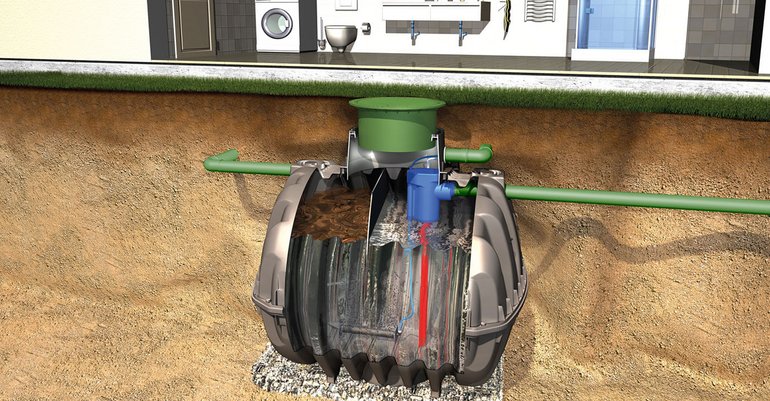Domestic septic tanks and wastewater treatment systems
These systems are designed to collect, treat, and safely dispose of wastewater generated within your household, including toilets, showers, baths, sinks, washing machines, and dishwashers. Whether you're building a new home or upgrading an existing property, a well-designed sewage treatment system is key to meeting both functional and regulatory requirements in Ireland.
✓ Safely treat and dispose of your wastewater in rural areas or where connection to a main sewer is not available.
✓ Choose a cost-effective solution that minimises running costs and maximises treatment efficiency.
✓ Ensure your on-site wastewater treatment system complies with your planning application and local county council regulations.
Get a FREE quotation today!
Why not speak to a wastewater specialist right now? Call us at +353 9351765
Engineered to lower costs for homeowners while providing exceptional wastewater treatment
✓ Experience exceptional wastewater treatment with up to 99% efficiency.
✓ Reduced operational costs and maintenance requirements for homeowners.
✓ Compact system ideal for projects with limited access, restricted space, or challenging ground conditions.
✓ Can be easily inspected and complies with local county council regulations and certifications.

Free Download: The Self-Builders Essential Guide!
✓ Understanding the EPA Site Suitability Assessment.
✓ Calculate the right size system for your property.
✓ Explore different types of septic tank systems.
✓ Reduce hidden long-term costs.
✓ Follow a simple step-by-step checklist.
Domestic wastewater treatment systems
More information
-
Design & planning
The design process for an on-site wastewater treatment system begins with an EPA site suitability assessment, a critical step to determine the most appropriate system for your site. This assessment evaluates soil percolation, topography, and site-specific conditions, ensuring compliance with EPA and local county council regulations.
Key considerations include maintaining minimum separation distances from the water table, bedrock, property boundaries, wells, nearby dwellings, and public roads.
These factors influence the safe treatment and disposal of your wastewater and determine whether a standard septic tank or wastewater treatment system with percolation trenches, a low-pressure pipe network, or an advanced tertiary filter is required.
-
Supply
Each wastewater treatment system is supplied with a tank, advanced SBR technology, and an outdoor cabinet providing weather-resistant housing for essential control components. Alternatively, for those requiring only the septic tank, the supply includes the wastewater tank with a baffle.
Optional extras are available on request for both options, including additional risers and a vehicular cover capable of withstanding traffic, making them suitable for installations in driveways.
-
Installation
Our septic tanks and wastewater treatment systems are designed with installation in mind, offering factory-designed lifting points to ensure quick and straightforward handling. The lightweight modular tank design makes transport and placement easy, even on sites with limited access or poor ground conditions.
For most sites, we recommend a gravel backfill, while a lean mix is preferred in areas with a high water table to ensure stability. Each system has all the necessary fittings and connections, making the installation process efficient and hassle-free. With clear guidelines provided by our experts, you can confidently complete the installation, even in challenging locations.
-
Commissioning
Once the wastewater treatment system has been installed and power is available, one of our service technicians will commission the system to ensure it has been installed correctly and is fully operational. This process includes a thorough check of all components to verify proper functionality and compliance with installation standards.
Upon completion, we provide a commissioning certification and a customer care pack digitally delivered within minutes, which can be shared directly with your engineer for their records. This ensures peace of mind and confirms that your system is operational and complies with your planning application and local county council regulations.
-
Service & maintenance
Regular service and maintenance are essential to keep your on-site wastewater treatment system performing at its best and to preserve the useful life of your components.
Typically, one routine service callout is required every 12 months, during which our service technicians perform a comprehensive inspection and maintenance process. This includes checking the control panel and operation/fault menu, replacing the air filter (if applicable), and conducting functional checks of all mechanical and electrical components, such as the control panel, air compressor, water pump, valves, high-level alarm, and pipework. The structural condition of the treatment system, including the percolation area, is also inspected.
Upon completion of the service, you will receive a full digital report within minutes, along with automated reminders for future service calls. Our services also include providing receipts for your local county council as part of your service and maintenance contract or planning application, ensuring your system complies with all relevant regulations.
-
Regulations & certification
Our septic tanks and wastewater treatment systems are designed for engineers, installers, and homeowners. Manufactured in accordance with EN12566 certification, the EPA Code of Practice 2021, S.R. 66:2015, and the Building Regulations Technical Guidance Document H.
What our customers say

"GRAF Ireland designed and commissioned a treatment plant for our activity centre. At all times we have found them to be extremely professional in dealing with our queries"
-Oliver Hart, Co.Cork

"We have worked with GRAF Ireland on several projects in the last number of years. We have found that the team are extremely helpful and knowledgeable."
-Pat Gleasure, Co.Cork

“I have found GRAF Ireland to be reliable, efficient & professional in their advice and all aspects of their service from quotation to installation”
-Kevin Murphy, Co.Cork
Get a FREE quotation today!
Why not speak to a wastewater specialist right now? Call us at +353 9351765
Frequently asked questions
-
Why do I need to install a wastewater treatment system?
You need a wastewater treatment system when a connection to a main sewer is unavailable and a standard septic tank isn’t suitable. Septic tanks and percolation areas require certain distances from water supplies, wells, or property boundaries, which can’t always be met, especially on small or awkward sites. In rural areas, connecting to a main sewer can be very expensive or simply not an option.
-
How much electricty does a wastewater treatment system use?
one2clean wastewater treatment systems are smart and simple, only requiring 0.63kwh per day.
-
How do I know which one is suitable for my site?
An EPA site suitability assessment is critical to determine the most appropriate system for your site. This might be a septic tank or a wastewater treatment system, depending on the ground conditions and space available on-site to meet the minimum separation distances required.
-
How does an SBR wastewater treatment system work?
one2clean wastewater treatment systems operates in three phases:
1.Aeration
In this phase, wastewater flows into the treatment area where oxygen is introduced by a diffuser located at the bottom of the tank. The added oxygen creates an ideal environment for naturally occurring bacteria to thrive. These bacteria immediately begin breaking down the organic waste, ensuring the treatment process starts right away.
2.Settlement
Following aeration, the system enters a pause to allow the contents to settle. During this time, heavier solids sink to the bottom, forming a layer of sludge, while the clearer, treated water rises to the top. This prepares the water for the next stage of the process.
3.Discharge
In the final step, the clarified water at the top of the tank flows by gravity or in some cases is pumped to your percolation area where the treated wastewater discharges to groundwater.
-
What type of percolation area do I need?
The type of percolation area that is suitable for your site will be specified in your EPA site suitability assessment and part of your planning application.
Without a percolation test, it is almost impossible to determine which type of system is right for you. Percolation areas can be traditional gravity trenches (percolation pipes), low-pressure pipe networks (soil polishing filters) or advanced tertiary filters.
-
How far does the system need to be from my house?
Your wastewater tank needs to be a minimum of 7 metres from the house, and your percolation area needs to be a minimum of 10 metres from the house.
-
Can I backfill the wastewater treatment system with gravel?
For most sites, we recommend a gravel backfill, while a lean mix is preferred in areas with a high water table to ensure stability.
-
Do wastewater treatment systems make noise?
one2clean operates at only 36 decibels, meaning it is extremely quiet relative to other wastewater treatment systems available.
-
Do I need to empty my septic tank or wastewater treatment system?
It is recommended that all septic tanks be emptied annually to comply with EPA & local county council regulations. Your wastewater treatment system will also require de-sludging (emptying). This is determined by the sludge build-up and can be measured during a routine service callout.
-
How often do I need to have my wastewater treatment system serviced?
We recommend servicing your wastewater treatment system annually to ensure maximum performance and preserve the useful life of your components. In many cases, the local authority will look for a service agreement as part of your planning application. We can provide service contracts tailored to your specific requirements.
-
Does our septic tank and wastewater treatment system comply with local regulations?
Our on-site wastewater treatment systems are manufactured per EN12566 certification, the EPA Code of Practice 2021, S.R. 66:2015, and the Building Regulations Technical Guidance Document H.
-
How far can the outdoor cabinet be from the tank?
The outdoor cabinet housing your components can be a maximum of 15 metres from the wastewater treatment system. This gives you the flexibility to decide where you would like the cabinet to go.
-
Do I need to bring a power supply to my wastewater treatment system?
Yes, you will need to bring a power supply to your wastewater treatment system. Usually, this is a 3-core 2.5 SWA cable glanded into the outdoor cabinet with a double outdoor socket. Instructions are provided for your electrician upon delivery of the system.
-
Who do I contact if I have a problem with my system?
You can contact our service department to book a service callout or get more information about your on-site wastewater treatment system.
-
How do I get my wastewater treatment system commissioned?
Once the wastewater treatment system has been installed and power is available, you can contact our service department to book your commissioning.



